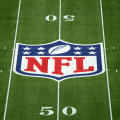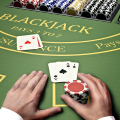The National Hockey League (NHL) is a professional ice hockey league known for its fast-paced action and intricate rules. Understanding the rules of the NHL can enhance your enjoyment of the game, whether you’re a seasoned fan or new to the sport. This comprehensive guide covers all the essential rules of the NHL, from gameplay basics to specific regulations.
The Basics of Ice Hockey
The Rink: An NHL rink is 200 feet long and 85 feet wide, divided into three zones: the defensive zone, the neutral zone, and the offensive zone.
Objective: The objective of the game is to score more goals than the opposing team by shooting a puck into their net.
Periods: An NHL game consists of three 20-minute periods. If the game is tied at the end of regulation, it goes to overtime and, if necessary, a shootout.
The Gameplay
Teams: Each team has six players on the ice: three forwards, two defensemen, and one goaltender.
Faceoffs: The game starts with a faceoff, and play resumes with a faceoff after stoppages. Players compete to gain control of the puck.
Offside: A player is offside if they enter the offensive zone before the puck. The play is stopped, and a faceoff occurs in the neutral zone.
Icing: Icing occurs when a player shoots the puck across the red line and past the opposing team’s goal line without it being touched. Play stops, and a faceoff is held in the defensive zone of the team that committed icing.
Penalties
Penalties result in a player being sent to the penalty box, giving the opposing team a man advantage, known as a power play. Common penalties include:
Minor Penalties: Two-minute penalties for infractions like tripping, hooking, and slashing.
Major Penalties: Five-minute penalties for more severe infractions like fighting.
Misconduct Penalties: Ten-minute penalties for unsportsmanlike behavior.
Penalty Shot: Awarded when a clear scoring opportunity is prevented by a foul.
Goalie Rules
Crease: The area in front of the net. Offensive players cannot enter the crease unless the puck is there.
Trapping the Puck: Goalies can trap the puck to stop play. A faceoff then occurs in the defensive zone.
Playing the Puck: Goalies can play the puck within a designated area behind the net. Handling the puck outside this area results in a penalty.
Scoring and Goals
Goal: A goal is scored when the puck completely crosses the goal line between the goalposts.
Assists: Up to two players who pass the puck to the goal scorer before the goal can receive assists.
Video Review: Goals can be reviewed to ensure they were scored legally.
Overtime and Shootouts
Overtime: In regular season games, if the score is tied after regulation, a five-minute, three-on-three sudden-death overtime is played.
Shootout: If the game remains tied after overtime, a shootout determines the winner. Each team takes turns shooting on the opposing goalie, and the team with the most goals after three rounds wins.
Equipment and Uniforms
Players must wear approved equipment, including helmets, skates, gloves, and protective padding. Goalies wear specialized equipment, including leg pads and a blocking glove.
Officials
Games are officiated by referees and linesmen who enforce the rules, call penalties, and ensure fair play.
Understanding these rules is crucial for fully appreciating and enjoying the National Hockey League. As you watch or play the game, keep these guidelines in mind to deepen your understanding of this thrilling sport.






